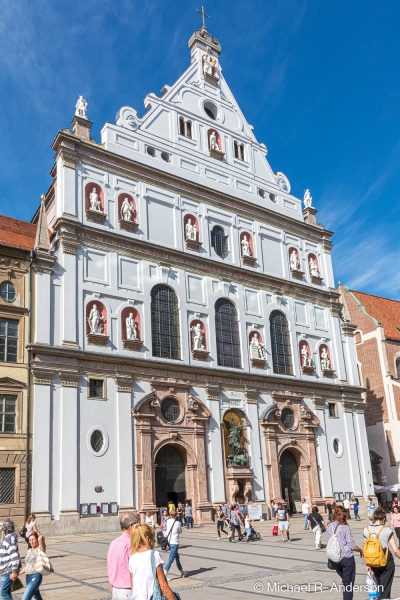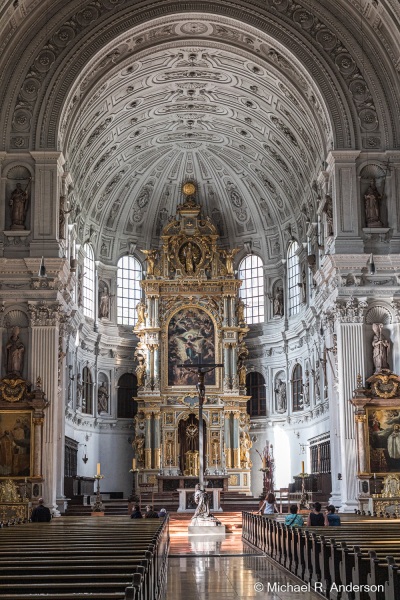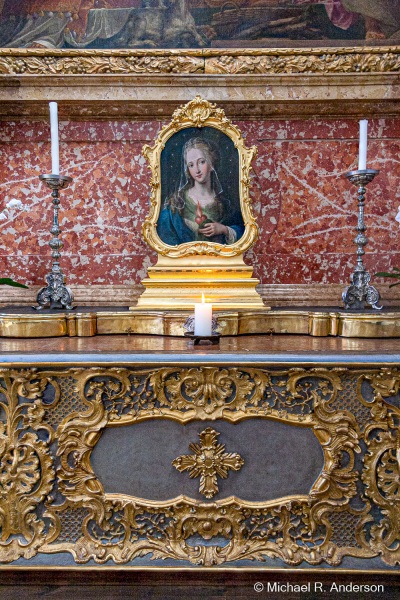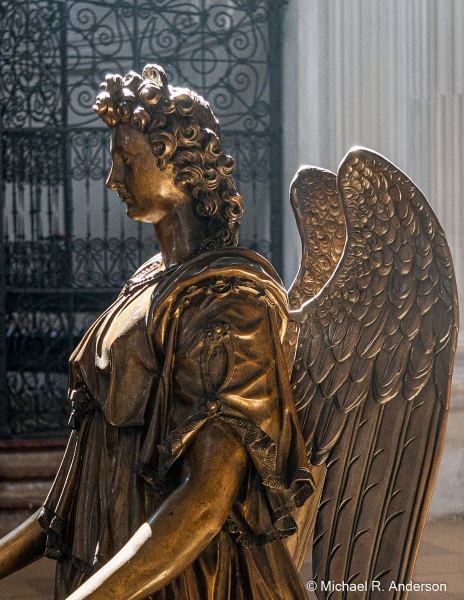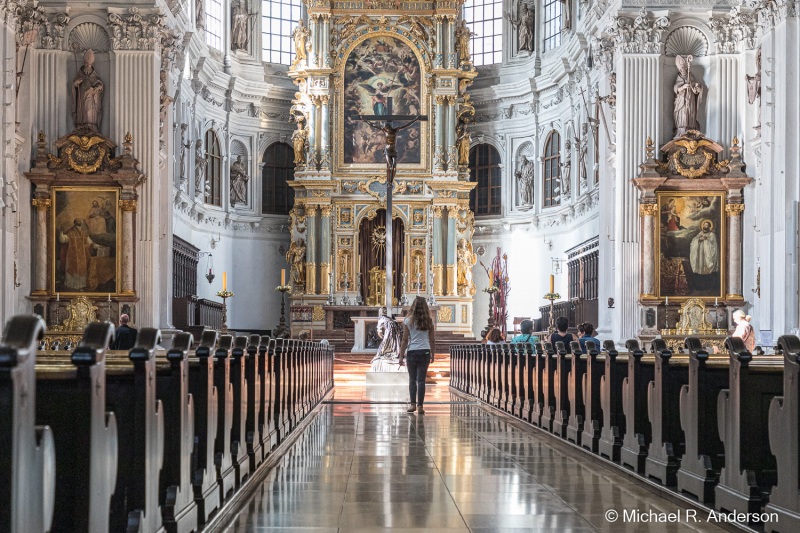Sitting only 30 miles from the Alps, Munich is the capital and most populous city of Bavaria. It’s Germany’s third-largest city behind Berlin and Hamburg. Many consider it to be one of the most livable cities in Europe. Arriving at Munich’s main train station, you emerge into a massive structure that sees about 450,000 passengers a day. This station is not only the center for all regional rail routes, but it’s also the main hub for area underground and suburban rail lines.
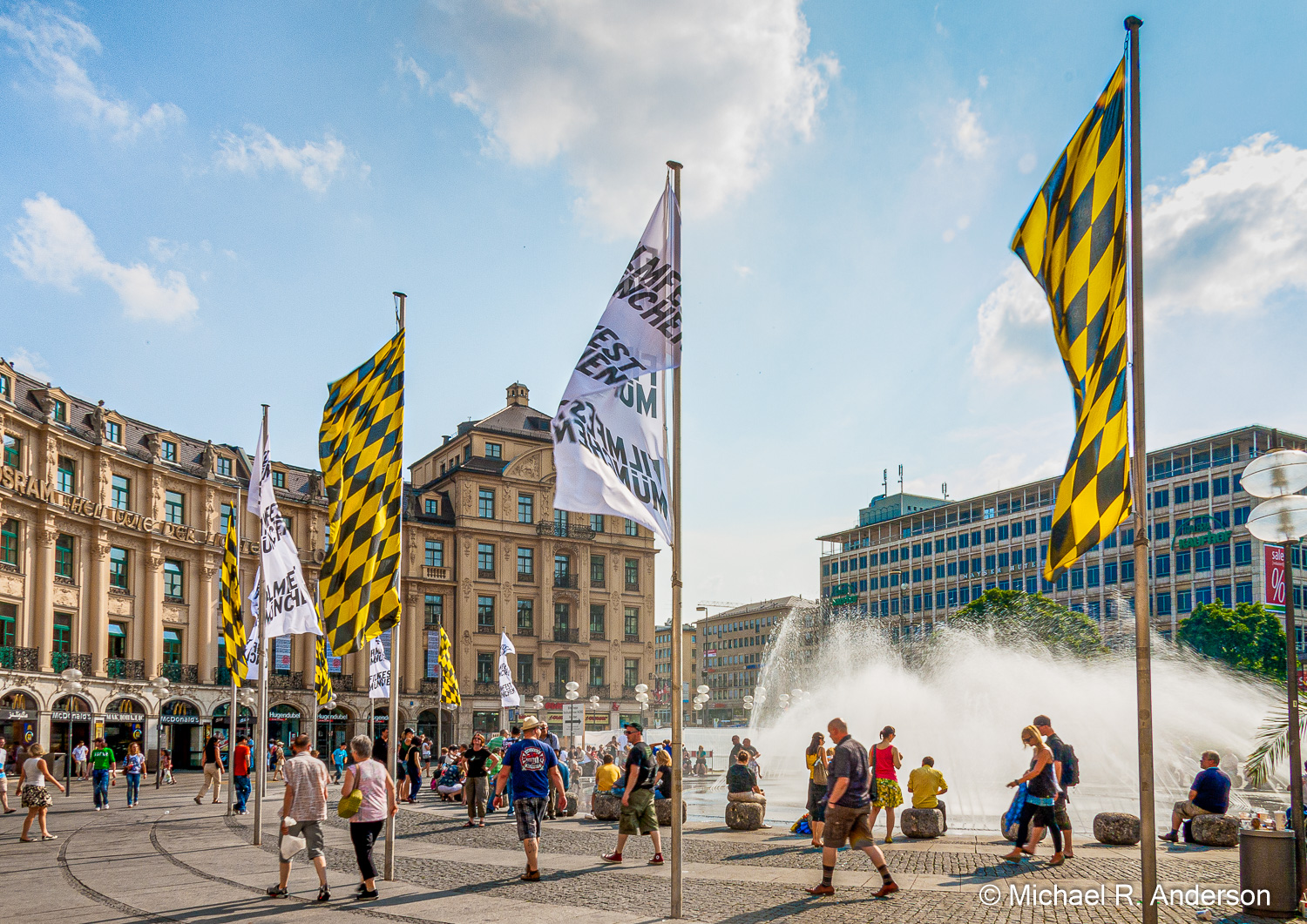
A short distance from the train station you’ll find Karlsplatz. This is a town square named after a king who was so unpopular that most residents call the square Stachus, the name of a pub formerly situated in that location. A beautiful fountain sits in the center of the square. It was a very hot day, which made the fountain even more appealing to humans and dogs alike. In the winter a large skating rink is installed there.
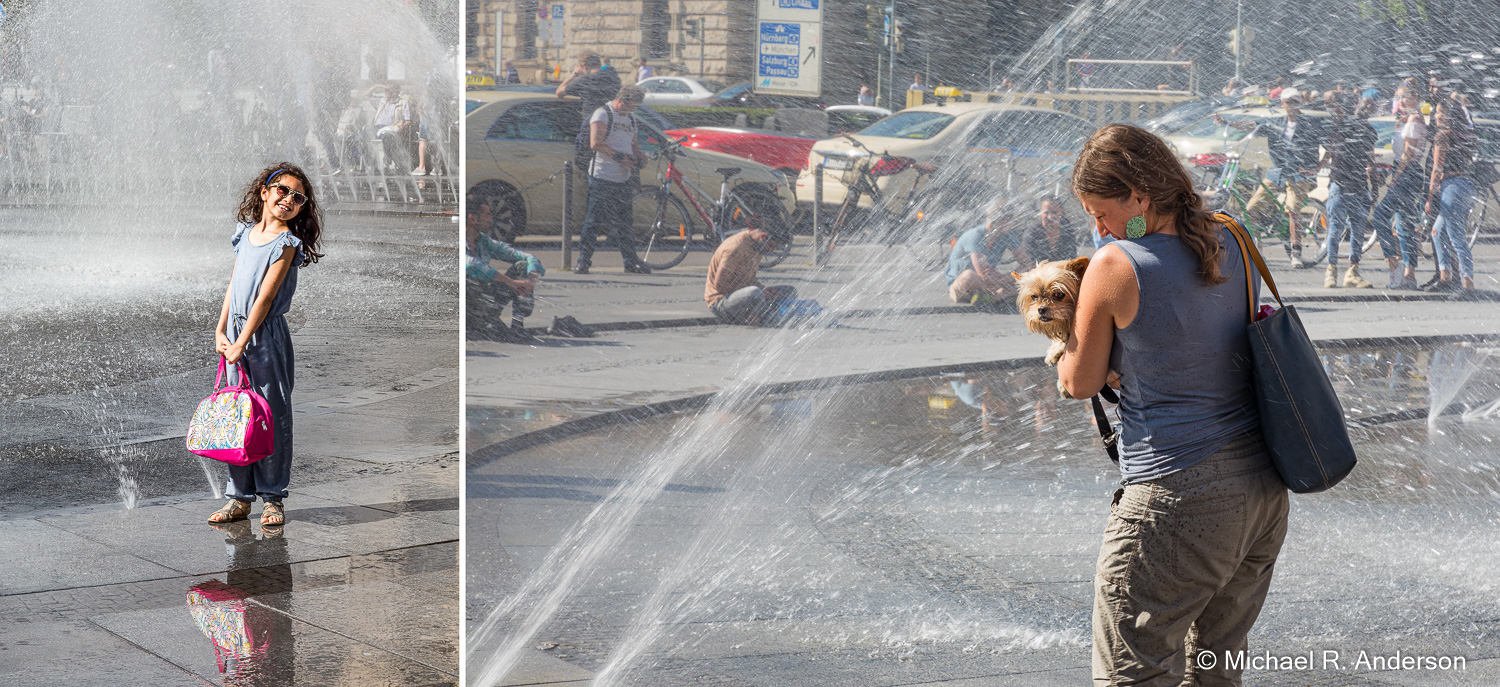
Since we arrived on the 4th of July, we thought it would be nice to dine in a quintessential American restaurant. As luck would have it, we found a McDonalds on the square near the fountain. The place was very large; you ordered on the ground floor and most of the seating was on what we would call the second floor but which the Europeans know as the first floor. My Big Mac and Kathy’s Chicken Sandwich were pretty much what you’d get in your local McDonalds except for one thing, the drinks did not come with ice. If you want ice you have to ask for it.
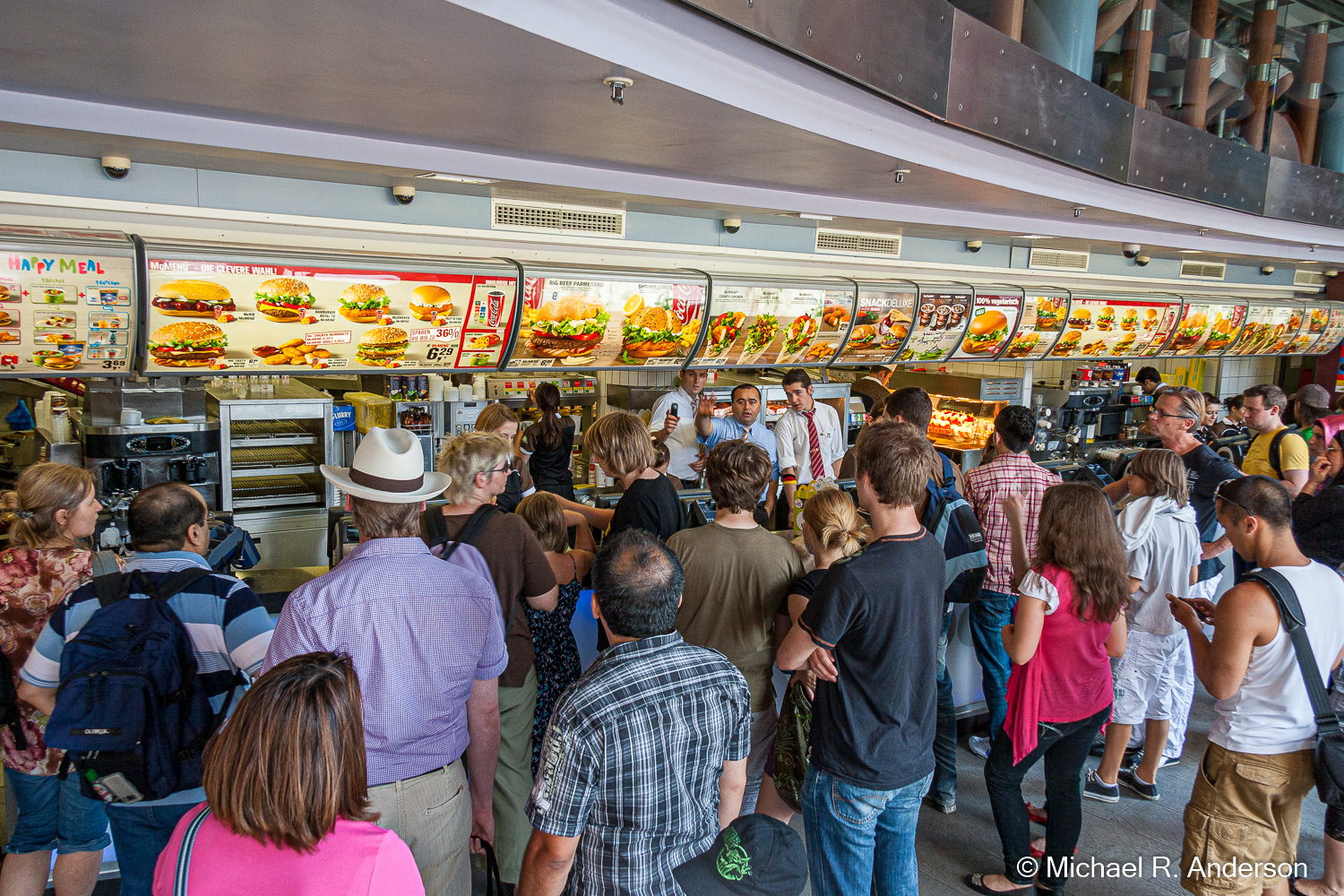
Continuing through the square you reach the Karlstor, one of the three remaining gates in what used to be the city wall that existed from the Middle Ages to the 18th Century.
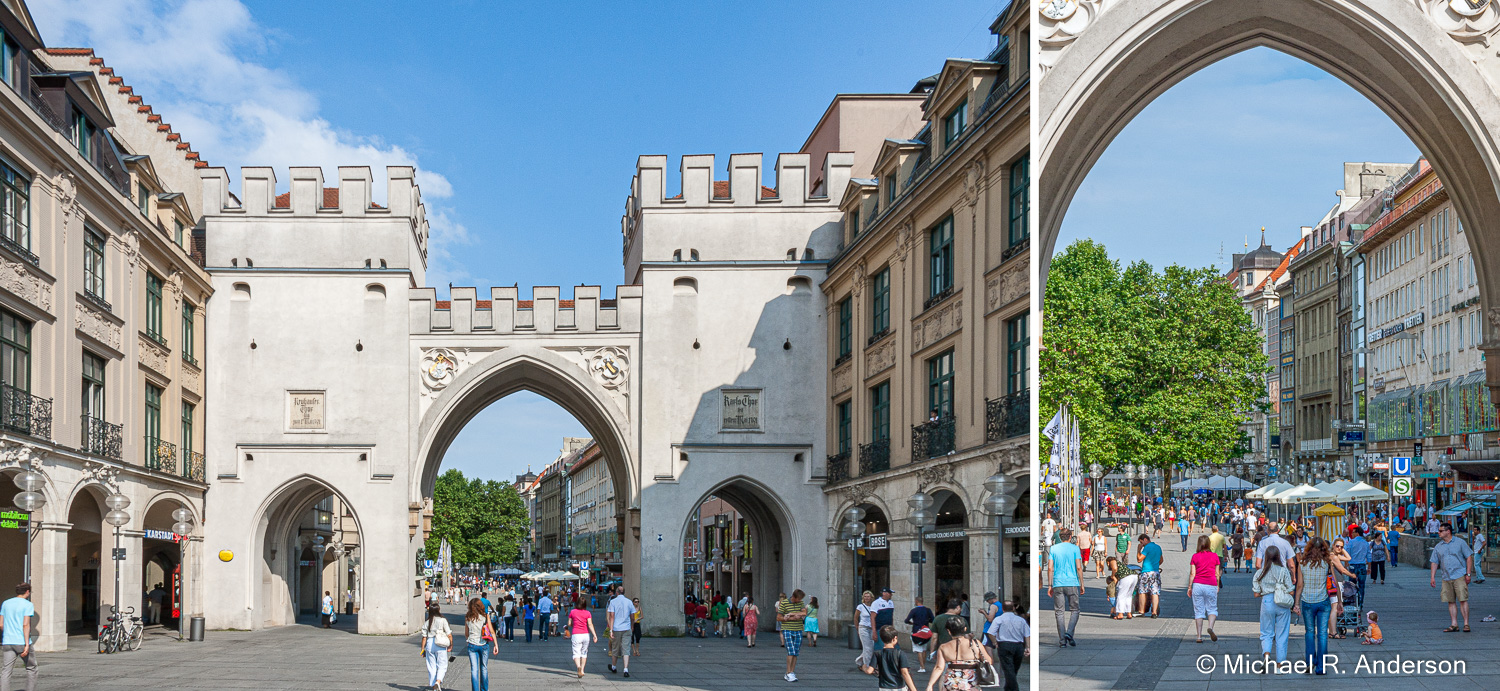
Passing through the gate you enter Old Town, the area that had formerly been surrounded by the wall. A large pedestrian zone located in Old Town is a wonderful place to slow down and walk, shop or dine.
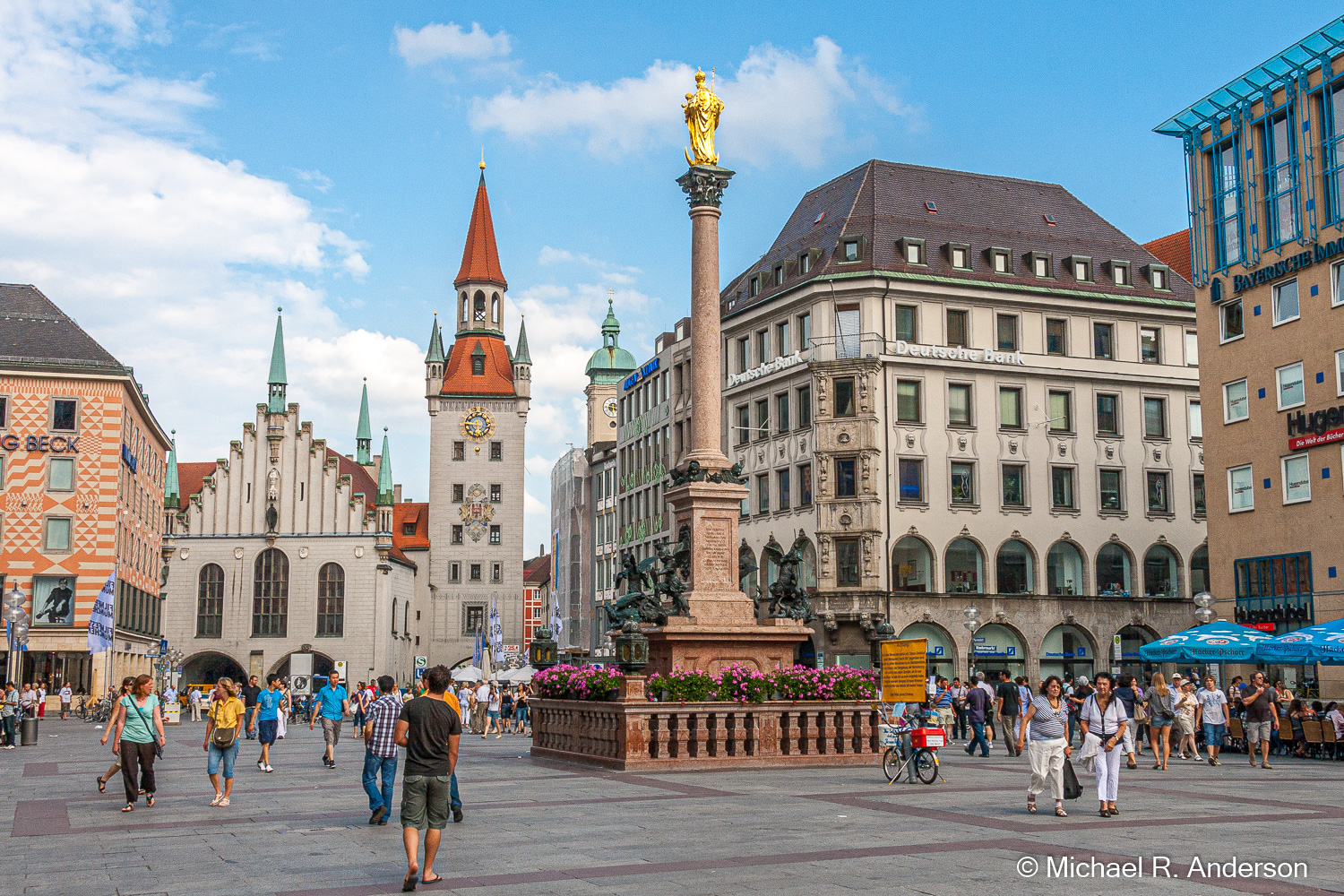
The pedestrian zone was devoid of the distracting noise of traffic but it was filled with the joyful sound of music. You could find musicians here almost any time of the day or night.
As we walked towards Marianplatz, the city’s main square, we happened upon St. Michael’s, a Jesuit church constructed from 1583 – 1597. This is the largest Renaissance church north of the Alps. In my previous post, Castles in the Clouds, I wrote about the castle Neuschwanstein and the man who had it built, King Ludwig II. I didn’t know this before we visited, but it turns out that he was buried here in 1886.
There are, of course, too many beautiful churches in Germany to visit all of them. With a name like St. Michael’s, however, who could resist visiting it? If the name isn’t reason enough, you may want to see the “highly unusual 20-metre wide barrel vault,” which is the world’s second-largest cantilever barrel vault after St Peter’s Basilica in Rome. I have no idea what a cantilever barrel vault is, so I only visited because of the name.
When we got to Marianplatz, the Neues Rathaus (New Town Hall) towered over the square. This houses the offices of the Mayor and the city council. Stores and restaurants fill the ground floor of the building and the Ratskeller, of course, is in the basement. The central tower is 279 feet high and contains the Rathaus-Glockenspiel, which plays daily at 11 am, 12 pm and 5 pm.
We were told that we could get great views of the New Town Hall and the city from the tower of St. Peter’s Church, the oldest church in the city. Since it was about 10:30 am, we decided to go there to watch the Glockenspiel performance. We only had to climb 306 stairs to reach the viewing platform! The stairway was too narrow for people going in opposite directions to easily pass. Fortunately, every couple of flights there was a roomier area where you could let people pass, or, in our case, rest for a while.
The performance began right at 11 am. According to the guide books, the Glockenspiel consists of 43 bells and 32 life-size figures. The top half depicts the marriage of a local Duke and the bottom half depicts a joust carried out for the newly weds. The Bavarian knight wins every time.
After we made our way back down the 306 steps, we decided that, since we were so close, we might as well take a look at the interior of St. Peter’s Church. We were not disappointed. The ceiling contains a beautiful fresco painted by Johann Baptiste Zimmermann from 1753 – 1756. Not the Sistine Chapel, of course, but beautiful just the same. The high altar, pipe organ, and works of art are also easily worth a visit.
We weren’t counting our steps but I’m sure we had easily passed 10,000 much earlier in the day. While walking outside the pedestrian zone, it was interesting to notice other modes of transportation. If you’d like to ride a bike, you’d fit right in. If you’d like to park your bike, however, you might not fit right in! Mass transit options are very easy to find.
If you’d like to try German cars, you can catch a taxi to ride in a Mercedes, or you can commit a crime to ride in a BMW.
